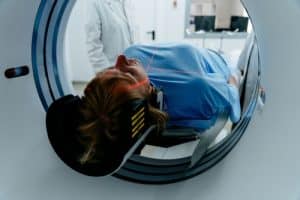MRI (Magnetic Resonance Imaging) is a non-invasive medical imaging technique that provides detailed images of the body’s internal structures. It is crucial in diagnosing various medical conditions and guiding treatment plans. In this comprehensive guide to MRI scans, we will cover all the essential information about MRI. Also, we will address the most common questions related to a whole body MRI.
What is a Whole Body MRI?
MRI is a medical imaging technique that uses powerful magnets, radio waves, and a computer to create detailed cross-sectional images of the body’s organs, tissues, and structures. Unlike X-rays and CT scans, MRI does not involve ionizing radiation, making it safe for patients. Accordingly, The Whole Body MRI is an advanced imaging protocol from the head through the knees.
The Marvelous History of MRI

One key figure was Isidor Rabi, a renowned professor of physics at Columbia University. In 1937, he devised a method for measuring the movements of atomic nuclei known as nuclear magnetic resonance (NMR). Rabi was awarded the Nobel Prize in Physics in 1944 for his groundbreaking work in this field.
Raymond Vahan Damadian (born March 16, 1936) is an American physician, medical practitioner, and inventor of the first MR (Magnetic Resonance) Scanning Machine.
Initially, marketers chose to eliminate the term “zeugmatography” and the word “nuclear” from “nuclear magnetic resonance” to ease people’s concerns about radiation. There are more than 22,000 MRI units globally, performing 60 million exams annually and significantly contributing to saving numerous lives.
How does MRI work?
MRI scanners create detailed images by using the magnetic properties of the body’s atoms. When the MRI machine’s strong magnetic field and radio waves interact with the hydrogen atoms in your body, these atoms align in a specific way. Then, as they return to their original state, they emit radio signals. Finally, The MRI system captures and processes these signals to create detailed images.
Furthermore, the strength of the magnetic field is measured in Tesla (T). Most MRI scans use machines with magnetic fields of 1.5T or 3T. So, at Whole Body MRI, we offer both types to provide the best screening options tailored to your specific needs.
Watch this video to understand the physics behind the MRI machines by the National Institute of Biomedical Imaging and Bioengineering.
What are the common uses of MRI?
MRI is utilized to diagnose and evaluate various medical conditions, including:
- Brain and spinal cord abnormalities
- Musculoskeletal injuries
- Cancer detection and staging
- Cardiac conditions and vascular disorders
- Joint and soft tissue problems
- Abdominal and pelvic abnormalities
- Potential Health Insights from Whole Body MRI Scans
Whole Body MRI scans have emerged as an effective tool for a comprehensive overview of an individual’s health. While these scans do not prevent diseases, they can provide valuable insights and early detection of various conditions, which can be essential for timely management and treatment.
Here are some of the potential conditions that may be detected through a Whole Body MRI scan:
- Cancers:
Whole Body MRI scans may help early detect certain types of cancers. For instance, the scan evaluates the head and neck for any detectable cancers. The chest is also assessed for masses greater than 1.5 cm, potentially indicating lung cancer or other thoracic malignancies.
The scan also assesses many vital organs in the abdomen and pelvis for tumors as small as 1 cm, including the liver, gallbladder, pancreas, spleen, kidneys, adrenal glands, urinary bladder, ovaries, uterus, and prostate. While this does not guarantee the detection of all cancers, it can provide valuable information about any noticeable abnormalities.
- Aneurysms and Ischemic Injury: The scan assesses the head and neck region for aneurysms, which are dangerous expansions or bulges in the blood vessels that can lead to life-threatening complications if they rupture.
- Spine Abnormalities: Whole Body MRI scans evaluate the spine for cord abnormalities, disc herniations, and degenerative changes. These findings could indicate conditions such as herniated discs or spinal stenosis, leading to pain, numbness, or even loss of function if left untreated.
- Musculoskeletal Conditions: We assess the shoulders, hips, and knees for obvious musculoskeletal conditions, such as arthritis, ligament or tendon tears, or other orthopedic issues.
Although a Whole Body MRI scan can provide extensive information about an individual’s health, you should not use it as a standalone diagnostic tool or replace other recommended screenings, such as mammograms or colonoscopies.
But, keep in mind that Whole Body MRI scans do not evaluate known medical conditions or symptomatic issues. They primarily serve as screening tools for asymptomatic individuals. So, consult your healthcare provider for personalized advice about the benefits and limitations of Whole Body MRI scans in your specific situation.
Process of Getting a Whole Body MRI
Here is a complete walk-through of the entire process.
- Book your scan
- Get a referral – we can help you get one
- Our team will confirm your eligibility via call
- Get scanned at one of our centers – Mississauga & Ajax
- Receive scanning report in 15-20 days
- Consultation with our expert radiologists
Here is a step-by-step illustration of how you can get a Whole Body MRI.
To conclude, the Whole Body MRI Scans offer a comprehensive and detailed assessment of a patient’s overall health and can be instrumental in diagnosing and monitoring various medical conditions. Furthermore, as a non-invasive imaging technique, it ensures patient safety and provides valuable insights for medical professionals to devise appropriate treatment plans.
So, if you have any concerns or questions about the Whole Body MRI Scan, do not hesitate to consult your healthcare providers. They will guide you through the process and address any specific issues.
Embrace the advanced technology of Whole Body MRI, and let it contribute to your journey towards better health and well-being.
Ready to take the first step? Book your scan now!






